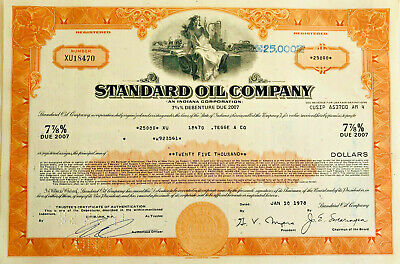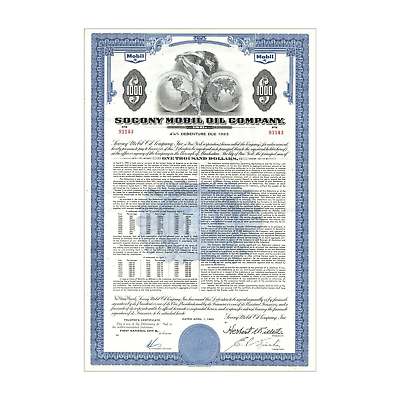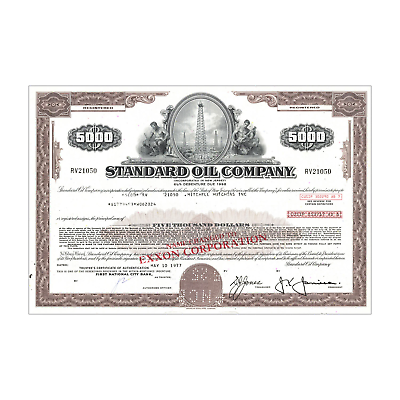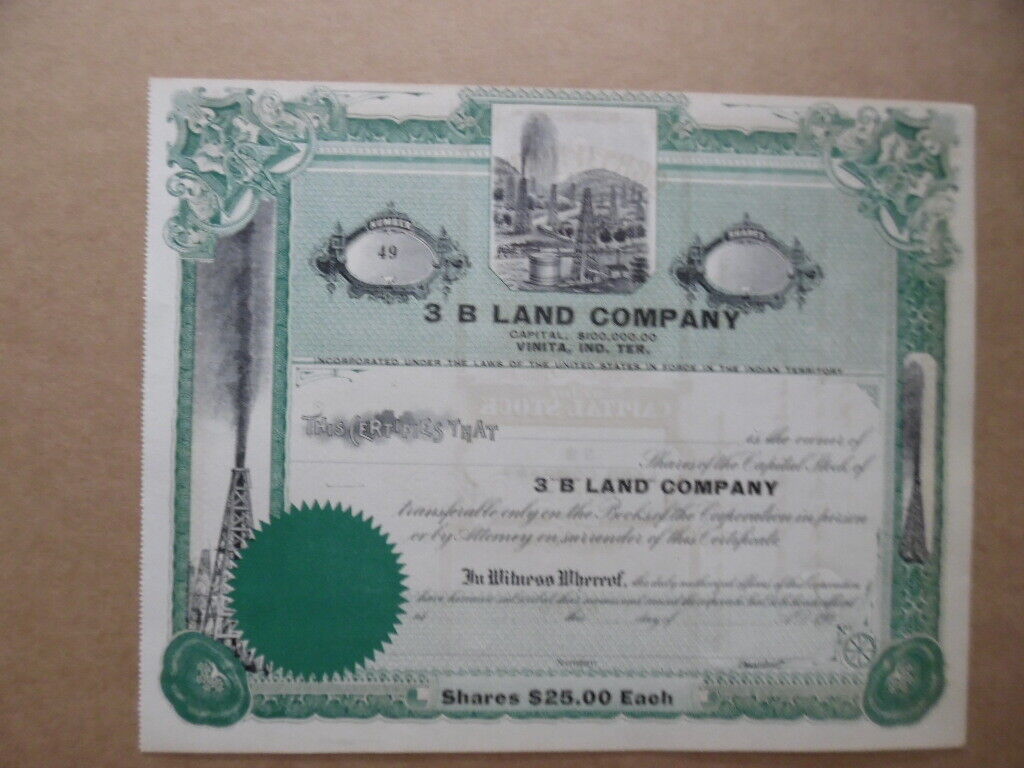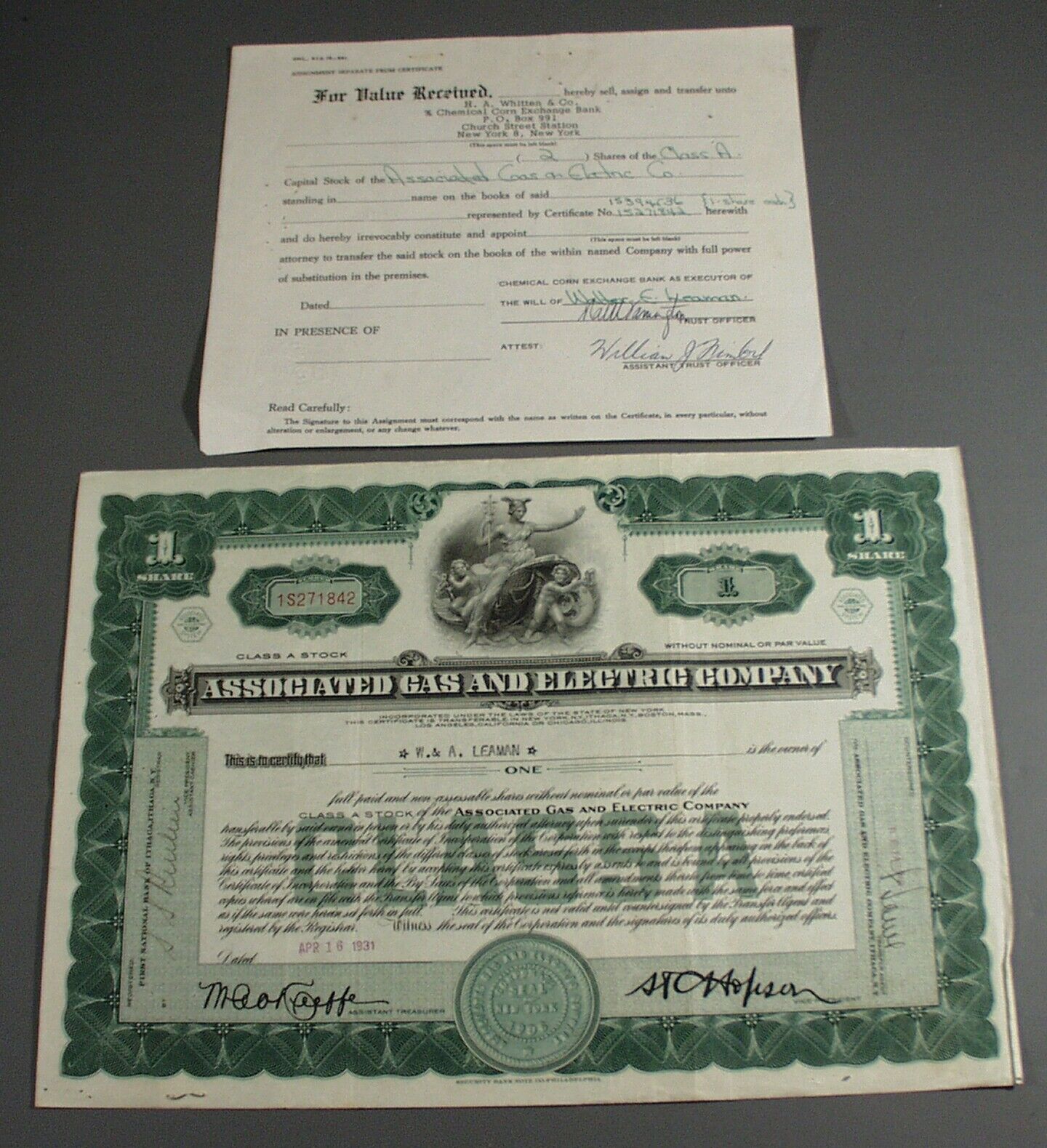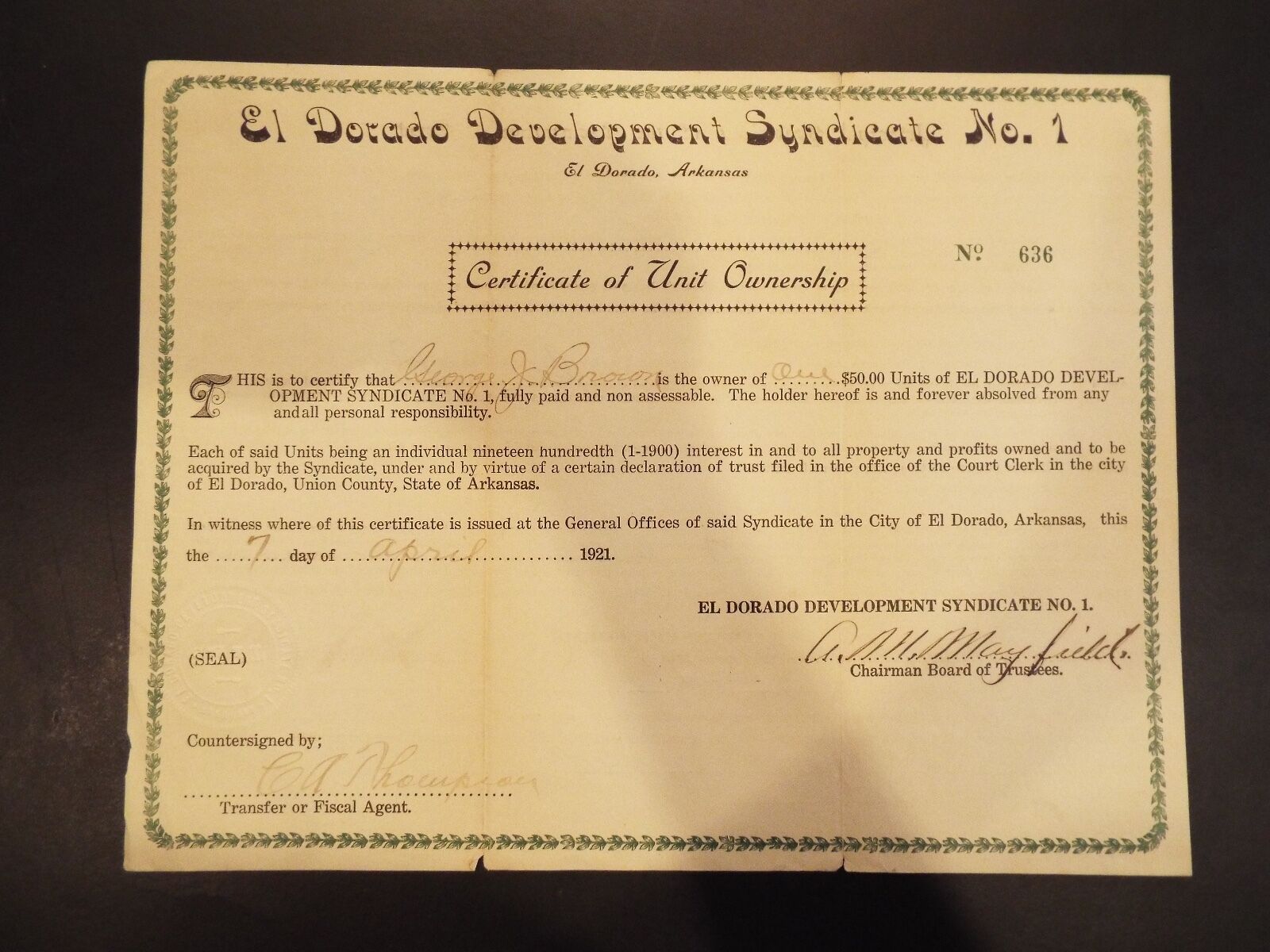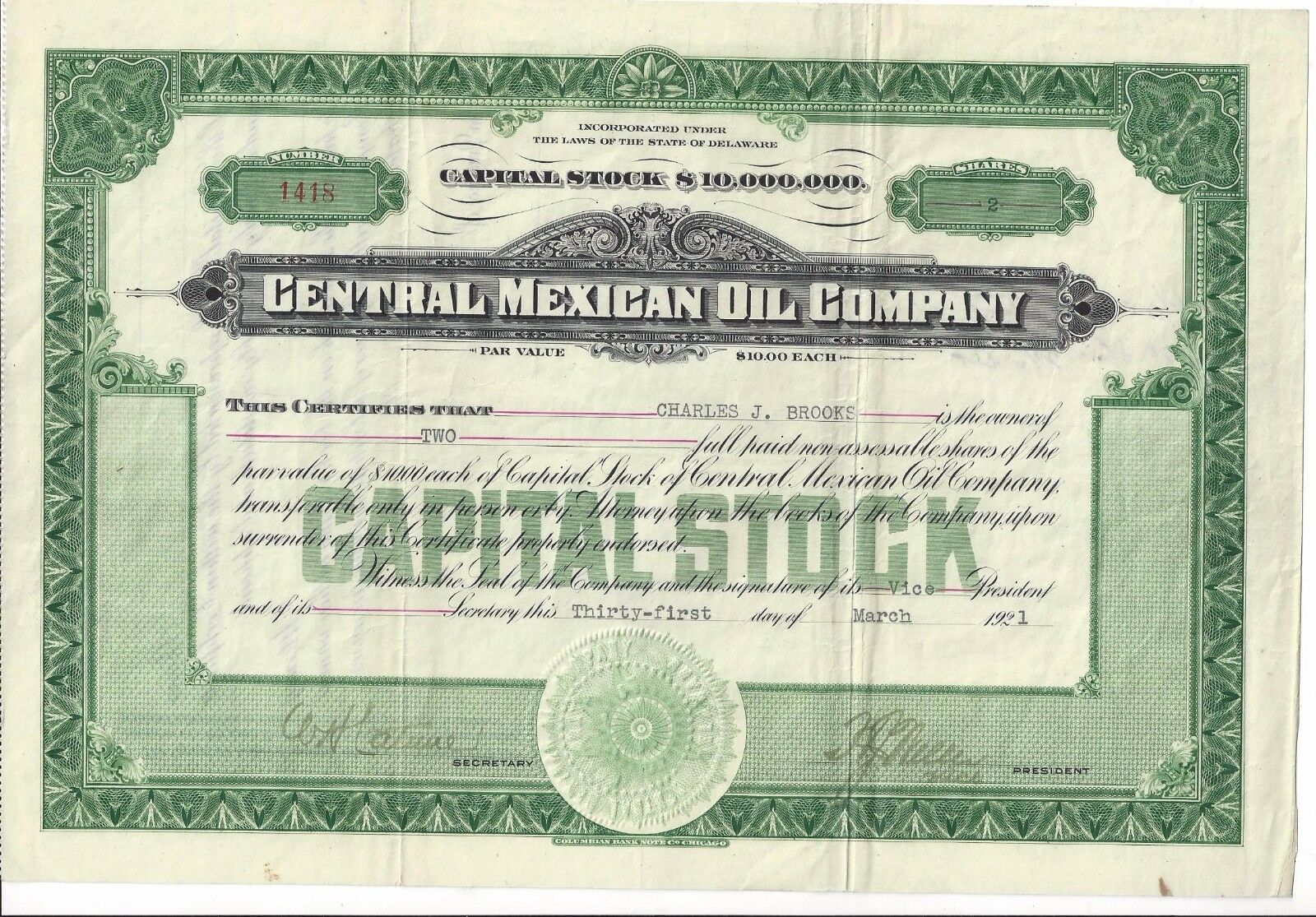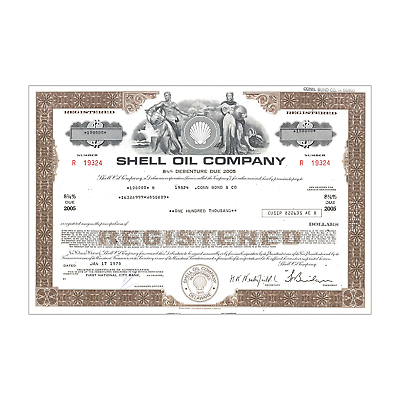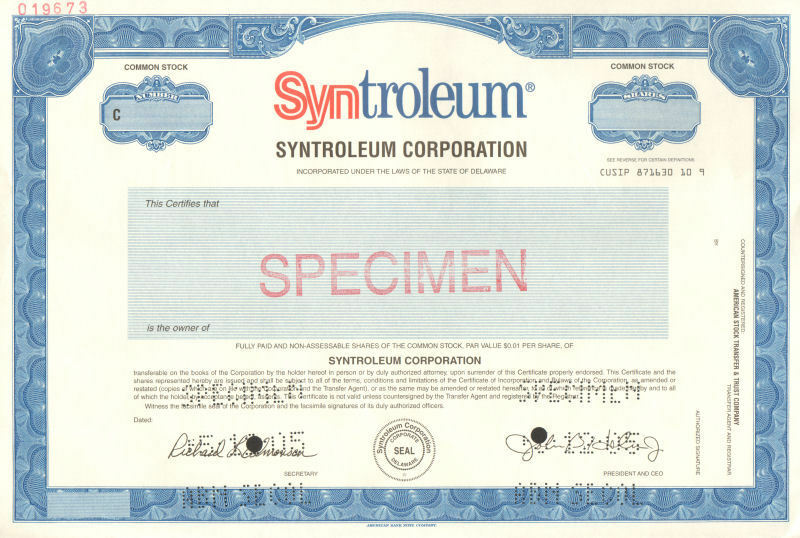-40%
Standard Oil Company > ,000 orange bond certificate
$ 7.91
- Description
- Size Guide
Description
Old Stock Yard Collectible Stock and Bond CertificatesStandard Oil Company
Original bond certificate
Bond issued for ,000
Incorporated in Indiana
Beautiful certificate with attractive vignette
More information on Standard Oil Company History:
Standard Oil
was a predominant American integrated oil producing, transporting, refining, and marketing company. Established in 1870 as an Ohio corporation, it was the largest oil refiner in the world and operated as a major company trust and was one of the world's first and largest multinational corporations until it was broken up by the United States Supreme Court in 1911. John D. Rockefeller was a founder, chairman and major shareholder, and the company made him the richest man in modern history.
Early years
Standard Oil began as an Ohio partnership formed by the well-known industrialist John D. Rockefeller, his brother William Rockefeller, Henry Flagler, chemist Samuel Andrews, silent partner Stephen V. Harkness, and Oliver Burr Jennings, who had married the sister of William Rockefeller's wife. In 1870 Rockefeller incorporated Standard Oil in Ohio. Of the initial 10,000 shares, John D. Rockefeller received 2,667; William Rockefeller, Flagler, and Andrews received 1,333 each; Harkness received 1,334; Jennings received 1,000; and the firm of Rockefeller, Andrews & Flagler received 1,000. Using highly effective tactics, later widely criticized, it absorbed or destroyed most of its competition in Cleveland in less than two months in 1872 and later throughout the northeastern United States.
In the early years, John D. Rockefeller dominated the combine, for he was the single most important figure in shaping the new oil industry. He quickly distributed power and the tasks of policy formation to a system of committees, but always remained the largest shareholder. Authority was centralized in the company's main office in Cleveland, but decisions in the office were made in a cooperative way. In response to state laws trying to limit the scale of companies, Rockefeller and his associates developed innovative ways of organizing, to effectively manage their fast growing enterprise. In 1882, they combined their disparate companies, spread across dozens of states, under a single group of trustees. By a secret agreement, the existing thirty-seven stockholders conveyed their shares "in trust" to nine Trustees: John and William Rockefeller, Oliver H. Payne, Charles Pratt, Henry Flagler, John D. Archbold, William G. Warden, Jabez Bostwick, and Benjamin Brewster. This organization proved so successful that other giant enterprises adopted this "trust" form.
The company grew by increasing sales and also through acquisitions. After purchasing competing firms, Rockefeller shut down those he believed to be inefficient and kept the others. In a seminal deal, in 1868, the Lake Shore Railroad, a part of the New York Central, gave Rockefeller's firm a going rate of one cent a gallon or forty-two cents a barrel, an effective 71% discount off of its listed rates in return for a promise to ship at least 60 carloads of oil daily and to handle the loading and unloading on its own. Smaller companies decried such deals as unfair because they were not producing enough oil to qualify for discounts.
In 1872, Rockefeller joined the South Improvement Company which would have allowed him to receive rebates for shipping and receive drawbacks on oil his competitors shipped. But when this deal became known, competitors convinced the Pennsylvania Legislature to revoke South Improvement's charter. No oil was ever shipped under this arrangement. In one example of Standard's aggressive practices, a rival oil association tried to build an oil pipeline to overcome Standard's virtual boycott of its competitors. In response, the railroad company at Rockefeller's direction denied the association permission to run the pipeline across railway land, forcing consortium staff to laboriously decant the oil into barrels, carry them over the railway crossing in carts, and pump the oil manually into the pipeline on the other side. When Rockefeller learned of this tactic, he instructed the railway company to park empty rail cars across the line, thereby preventing the carts from crossing his property.
Standard's actions and secret transport deals helped its kerosene price to drop from 58 to 26 cents from 1865 to 1870. Competitors disliked the company's business practices, but consumers liked the lower prices. Standard Oil, being formed well before the discovery of the Spindletop oil field and a demand for oil other than for heat and light, was well placed to control the growth of the oil business. The company was perceived to own and control all aspects of the trade. Oil could not leave the oil field unless Standard Oil agreed to move it: the "posted price" for oil was the price that Standard Oil agents printed on flyers that were nailed to posts in oil producing areas, and producers had no power to negotiate those prices.
In 1885, Standard Oil of Ohio moved its headquarters from Cleveland to its permanent headquarters at 26 Broadway in New York City. Concurrently, the trustees of Standard Oil of Ohio chartered the Standard Oil Company of New Jersey (SOCNJ) to take advantages of New Jersey's more lenient corporate stock ownership laws. SOCNJ eventually became one of many important companies that dominated key markets, such as steel and the railroads. Also in 1890, Congress passed the Sherman Antitrust Act — the source of all American anti-monopoly laws. The law forbade every contract, scheme, deal, or conspiracy to restrain trade, though the phrase "restraint of trade" remained subjective. The Standard Oil group quickly attracted attention from antitrust authorities leading to a lawsuit filed by then Ohio Attorney General David K. Watson. ~ Wikipedia
Old Stock Yard Policies and FAQs
Please visit my eBay store
– any combined certificate purchases
ship free
with auction items!
Shipping and Handling Charges:
.99 for one certificate to the U.S.
.99 for one certificate to the rest of the world
Additional, combined certificate purchases
ship for free
!
Shipping Method and Timing:
Certificates are carefully packaged in poly bags and rigid envelopes to protect them during shipment. Items are sent via U.S.P.S. – usually first class, but occasionally priority or parcel post. Most items will be mailed within 48 hours of payment.
Payment Method:
In accordance with
eBay
policy, my listings are setup to accept
Paypal
payments. Sellers are allowed to accept other forms of payment only if the buyer requests another payment method – so if you prefer to pay using a method other than Paypal, please let me know.
Return Policy:
Items can be returned for any reason within 15 days of purchase. A full refund will be issued upon receipt of the return if the item is the same condition it was in upon delivery.
FAQs:
Are you your certificates authentic or copies?
Everything
I sell is original and authentic. I do not sell copies or reproductions.
Is the certificate pictured the exact one I will receive?
Usually, yes. Occasionally, I do list certificates of the same type without rescanning. In this case, the certificate you receive will be virtually identical (same color, size, vignette, etc.) to the one pictured. Again, if you ever receive anything from me you are not 100% pleased with, you can return it for a full refund.
What is the best way to store, protect, and display my certificate collection?
The best thing, by far, that I have come across for storing certificates are
profolios and sleeves made by Itoya
. You can purchase them in my eBay store. I have several sizes available.
Do the certificates you sell have financial value?
No, these certificates are sold as collectibles only; although they are authentic, they no longer hold financial value.
